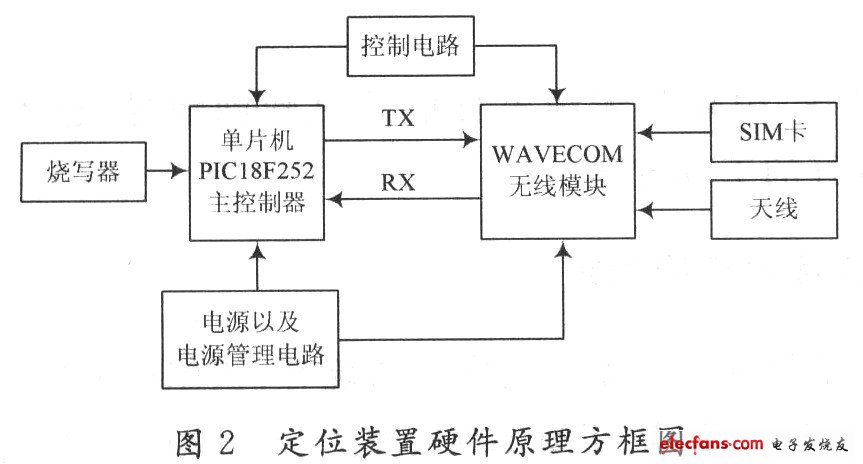0 Preface
Global System of Mobile com-municaTION (GSM), commonly known as "Global Communications", is the second generation of mobile communication technology. Its development purpose is to enable the world to share a mobile phone network standard, and users can use a mobile phone. Traveling all over the world, it uses all-digital signaling and voice channels. It is the most mature, complete, and widely used system in the current mobile communication system based on time division multiple access technology.
The GSM network has now become the main body of China's mobile communication network. China's GSM network is already the world's largest mobile communication network, and it has made great contributions to the country's economic development. At the same time, there is an increasing demand for wireless positioning, such as anti-theft of vehicles, field power supply equipment, field communication relay equipment, field automatic detection equipment and other unattended property anti-theft alarms and parking in public places, customs anti-smuggling positioning tracking The loss of the old man.
1 Wireless positioning technology
According to the spatial position, wireless positioning can be divided into satellite wireless positioning and ground wireless positioning: satellite positioning uses the Global Positioning System (Global Posi-TIon SySTem, GPS), the Global Navigation Satellite System (Global Navi-gaTIon Satellite System, GLONASS), and China ’s Beidou Satellite systems such as binary stars achieve three-dimensional positioning of moving targets; ground-based wireless positioning achieves two-dimensional positioning of moving targets by measuring radio wave propagation time, signal field strength, phase, incident angle and other parameters. Cellular network wireless positioning belongs to the ground wireless positioning system. GPS satellite positioning can obtain a highly accurate positioning effect when outdoors, but it requires special receiving equipment, which is inconvenient to use in most cases. In addition, in special cases such as indoors and between dense buildings in urban areas, GPS reception If the machine cannot receive 4 or more GPS satellite signals, it will cause poor positioning or even unable to locate.
Both the GSM network and the CDMA network are cellular networks, and the so-called "cellular" is a number of cells into which a geographical area is divided. In the wireless positioning technology based on GSM cellular network, the CELL-ID method is the simplest and most direct positioning method, and is also the most widely used cellular network positioning method at present. It collects the cell identification number (Cell- ID number) to determine its location, each cell has a unique identification code, so its positioning can only be regional positioning. At present, the density of base stations in the domestic GSM network is very large, and the accuracy of cell positioning can be as high as 100 m. Therefore, this paper adopts the CELL-ID method to complete the area positioning without any changes to the existing wireless network.
2 Design and implementation of positioning device
2.1 Design of positioning system
2.1.1 Functional design of positioning device
(1) It has two working modes of position tracking and sleep, and can be set by SMS. Location tracking mode requires that when a location changes, it sends a message to the specified mobile phone or device to report the new location. The sleep mode is that the device works with minimum energy consumption, and wakes up and answers the query when it is externally queried.
(2) Support response to SMS or phone inquiry.
(3) Support SMS to set the trusted mobile phone number or GSM module.
(4) The standby time exceeds 120 h.
2.1.2 Composition of positioning device system
The composition of the positioning device is shown in Figure 1. The GSM module detects in real time that the user sends a short message or dials a call to the positioning device through the GSM network. The GSM module automatically responds after receiving the short message or telephone signal, and transmits the data obtained by the response to the single-chip microcomputer. The single-chip microcomputer judges and processes the received data, and then Send the AT command to the GSM module, control the GSM module to work and give back information to the user in the form of SMS.

2. 2 hardware design
The hardware block diagram of the positioning device is shown in Figure 2.

- USB Ports 4 Gang Extension Cord supplying power support for multiple electrical devices from a single 4 Way Electric Outlet but also maintain a compact and simple design. The Outlet and Plug can be various type e.g. American, Australian, British, French, German, Universal......
- Compact and Light weight: 4 Outlet Power Board with 6 feet cord power strip is sufficient and easy for most of power needs occasion. Flexible design provides you multiple choices e.g. surge protection, overload protection, USB quick charging etc.
- advanced flame retardant material is safe and reliable as well as pure copper high conductive elements compliance with international standards like ETL, CE, etc.
4 Gang Power Strip, 4 Outlet Power Board, 4 Way Electric Outlet, USB Ports 4 Gang Extension Cord, Surge Protected 4-Outlet Power bar
ZhongShan JITONGLONG Plastic Hardware Co. Ltd. , https://www.toukoo-electronics.com
